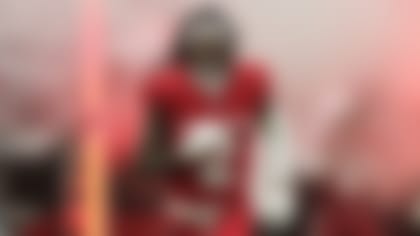As NFL trends go, this one doesn't require a whole lot of brain power to comprehend.
After watching the ninth team in the last 12 years win a Super Bowl with a top-10 defense, it was pretty easy for many teams to go about their offseason shopping with the fundamental football belief that defense wins championships.
None put it into practice with greater zeal than the Minnesota Vikings, who have done a superb job of stopping the run but whose shoddy pass coverage has been a factor in keeping them out of postseason contention.
In March, the Vikings paid $13 million in guaranteed money to acquire former Cincinnati safety Madieu Williams to replace Dwight Smith. In April, they traded with Kansas City for NFL sack leader Jared Allen and promptly made the ultra-quick end the highest-paid defensive player in the league with a deal that included $31 million in guaranteed cash. Then they used a second-round draft pick on a safety, Tyrell Johnson, and enhanced their depth by picking up cornerback Benny Sapp, safety Michael Boulware, and linebacker Derrick Pope.
The Cleveland Browns, New Orleans Saints, Jacksonville Jaguars, San Francisco 49ers, Oakland Raiders, and Chiefs also were especially aggressive when it came to signing and drafting defensive players.
Regardless of the areas addressed, one does tend to help the other. The Vikings, who had the league's top-ranked run defense in 2007 but ranked dead-last against the pass, believe their hefty investment in Allen will do as much for their secondary as it will for their defensive line. A stronger pass rush means less time for opposing quarterbacks to throw. And, in theory, that means more chances for defensive backs to break up passes or intercept them.
"I hope we can make a ton of difference," said Allen, who had 15½ sacks last season. "First and foremost, we've got to keep stopping the run like they've done here in the past. And then we've got to put people in third-and-long, second-and-long situations so that we can get after them up front. We've got to work well with those guys on the back end.
"Right now, up front, our expectations are high."
After reaching the NFC Championship Game in 2006, the Saints took a major backslide last season and missed the playoffs. The biggest reason was that their defense ranked 26th in the league in yards allowed and 30th against the pass, and generated only 32 sacks (tying them for 19th in the NFL).
The Saints' decision-makers knew what had to be done. They traded with the Jets for linebacker Jonathan Vilma. They signed free agents defensive end Bobby McCray and cornerbacks Randall Gay and Aaron Glenn. They used their first pick in the draft on a defensive tackle, Sedrick Ellis, and their second choice on a cornerback, Tracy Porter.
"As we all know, we've got to affect the quarterback more with our front four than we did a year ago," Saints defensive coordinator Gary Gibbs said. "We've got to be able to put some pressure on that guy and disrupt his timing. And when you look at Bobby, and look at Sedrick inside, those two guys are going to help you."
The Browns were much closer to a playoff appearance last season. The emergence of quarterback Derek Anderson and revival of running back Jamal Lewis gave them an explosive offense, but their defense needed help after finishing 30th in the league in yards allowed, 27th against the run, and 24th against the pass. And the Browns got it by making trades for a pair of defensive tackles, Shaun Rogers from Detroit and Corey Williams from Green Bay.
They also used their first overall draft pick -- which didn't come until the fourth round -- on a linebacker, Beau Bell, but he underwent knee surgery earlier this month.
Of course, just because a team adds defensive players doesn't necessarily mean it will have a better defense. Players need to perform within the structure of the scheme. Free-lancing usually creates gaps. And gaps usually create big plays -- for the other team.
"Each defensive call, each formation, guys have to understand, 'In this defense, this is where I fit, this is where I need to be,'" new Browns defensive coordinator Mel Tucker pointed out. "If you can get 11 guys to understand where they need to fit on the run, and be consistent doing that using technique and fundamentals, that gives you the biggest chance."
The teams that have beefed up on defense also know that the magic isn't all in the checkbook or on the draft board. Players need to perform up to their lofty expectations.
"It's been an exciting offseason," said second-year Vikings defensive coordinator Leslie Frazier. "Now we have to carry that over to the real thing. You can have it on paper, but you've got to be able to produce on the football field, and I think we'll be able to do that."
"Everyone always says they're going to be better than they were the year before," Saints defensive end Will Smith said. "You really don't know until you get out there and start playing the games, but we can tell a little bit in these practices. The way guys are flying around, just guys' attitudes, we can tell we're going to be a lot better."
Have a question for Vic on anything NFL related? Don't just sit there -- send it to AskVic@nfl.com, and the best questions will be answered throughout the season right here on NFL.com!




